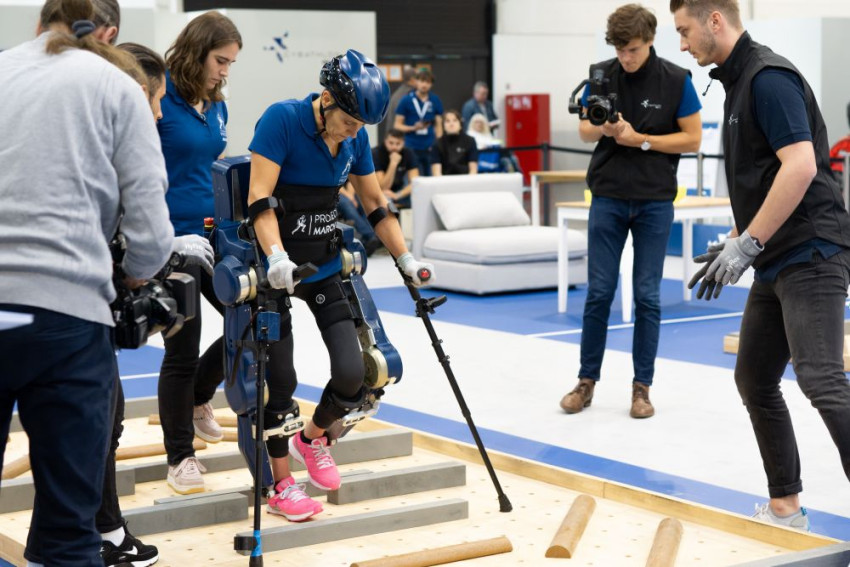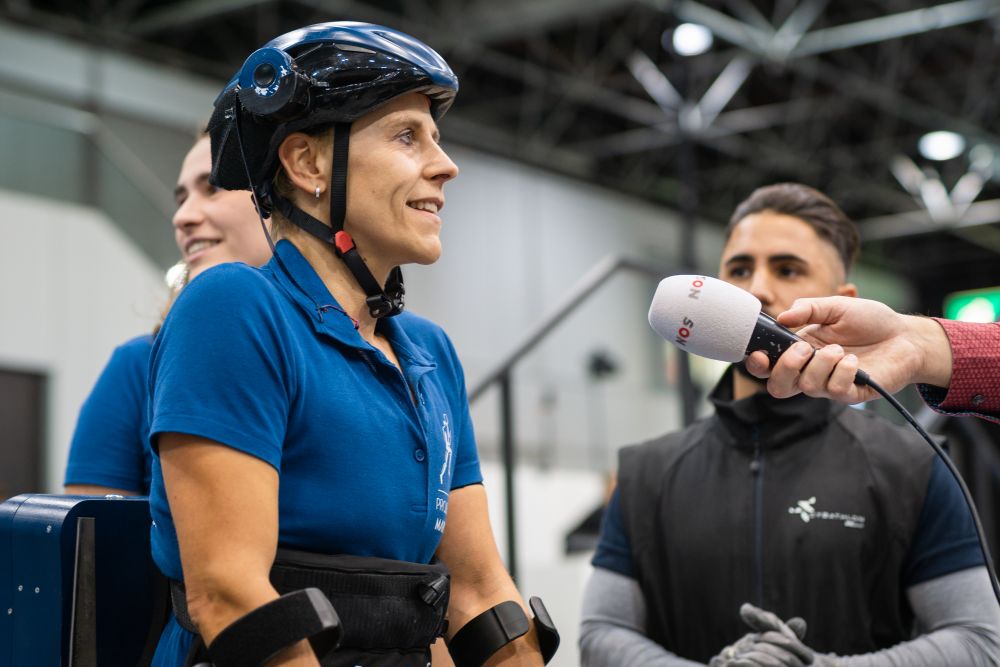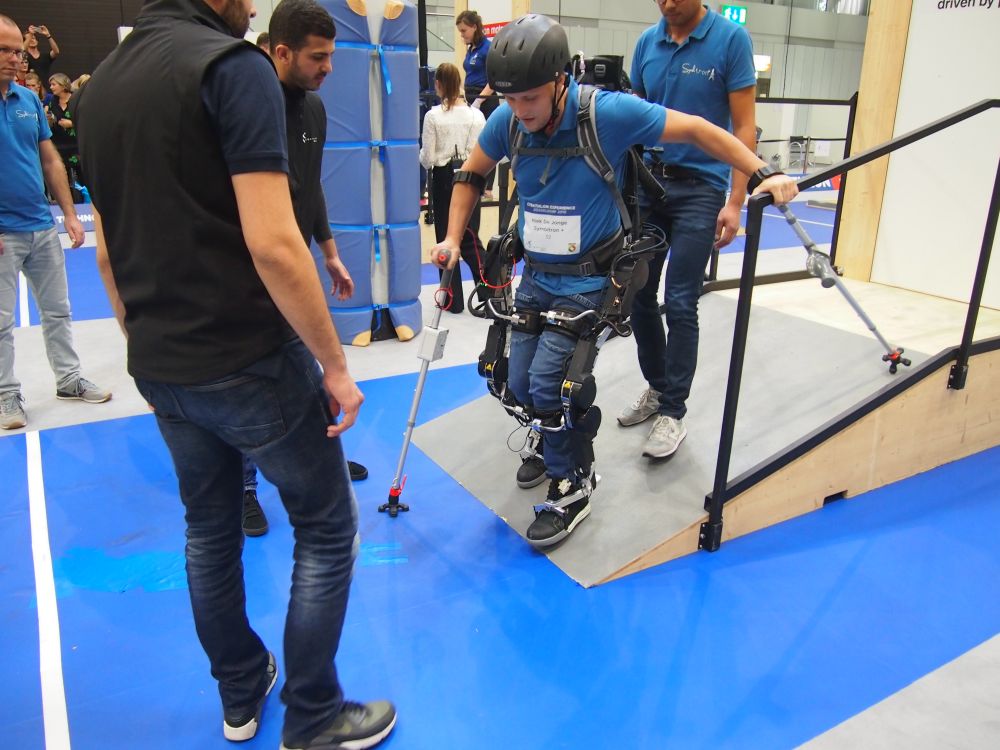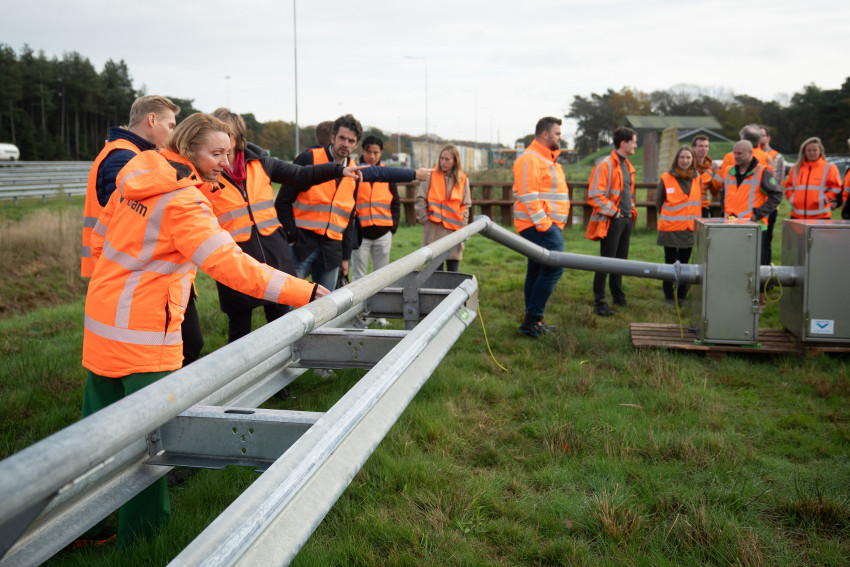
Delft and Twente exoskeletons show off their skills
During the Cybathlon Experience, teams from the universities of Delft and Twente showed what paraplegics can do with the aid of an exoskeleton. Only the Delft team’s exoskeleton succeeded in completing all the assignments within the stipulated time.
The tasks that the teams had to complete during the Cybathlon Experience competition in Düsseldorf involved walking over randomly laid out obstacles, going up and down a slope, climbing and descending stairs, and opening a door and going through it – all performed by somebody paralysed from the waist down using an exoskeleton.
This mini-Cybathlon took place during Rehacare in Düsseldorf, a major trade fair held over several days for aids to help people with disabilities. In the end, only three teams participated: Project March, by students from Delft University of Technology, Symbitron+ by the University of Twente, and a team from the University of Mexico.

THREE MONTHS OF TRAINING
The student team Project March from Delft University of Technology was the only team that managed to carry out all the assignments within the stipulated time, with paraplegic patient Sjaan Quirijns at the helm. ‘Our success was mainly due to the long period we spent working together with Sjaan Quirijns. She trained with our exoskeleton for three months, which gave us plenty of time to adjust it completely to her wishes,’ according to student and team member Magali Ponds.
The exoskeleton has also been improved in a number of respects compared to earlier versions, and now has an ankle joint. ‘That was essential for walking up and down the slope’. Sjaan Quirijns can also vary the size of her step (see ‘Team of students improves exoskeleton’). The exoskeleton also gives more feedback. ‘It’s still very tricky, because the exoskeleton determines the movement, and the person using it has to let it take the lead’. The new exoskeleton gives a signal in the form of a vibration when Quirijns has processed a certain task, such as ‘climb the stairs now’, and gives a beep when it actually starts moving. ‘The sound of the motors is then enough for her to be aware that the exoskeleton is making its movements.’

PROBLEMS WITH THE MOTORS
The other team, Symbitron+ by the University of Twente, faced problems with irregular running of the motors that set the skeleton in motion. ‘The actuators that we used to move the exoskeleton turned out to be a bit too fragile’, said Edwin van Asseldonk of the University of Twente team. ‘We were constantly solving problems during the race, because the movement sensors were sending the wrong signals.’ The team was highly praised for its walking pattern interface. ‘You have to programme every movement of the exoskeleton, whether it’s simply walking, going up and down stairs, etc., in a way that makes the movement as natural as possible. That’s something our software tool does really well.’
The third team, from Mexico, was unable to take part in the contest because one of the motors suffered a broken axle when the exoskeleton was already at the event.
CYBATHLON 2020
Both Delft and Twente are now preparing for the big Cybathlon competition in 2020. The first edition of these Olympic Games for high-tech aids took place in Zurich in 2016.
If you found this article interesting, subscribe for free to our weekly newsletter!
Opening photo: Sjaan Quirijns walking over obstacles. Photo by Project March Team







